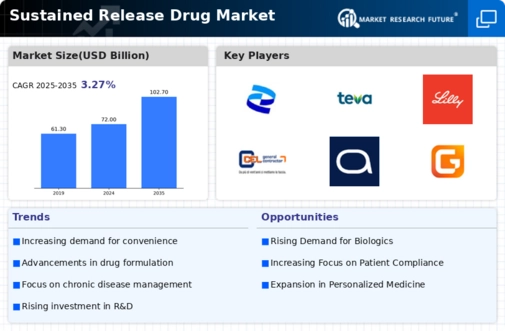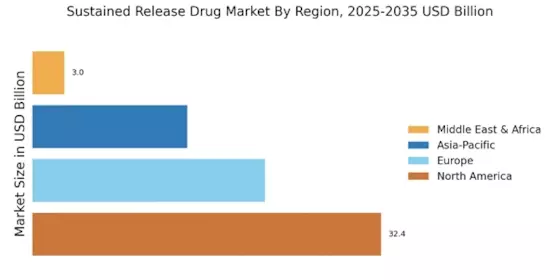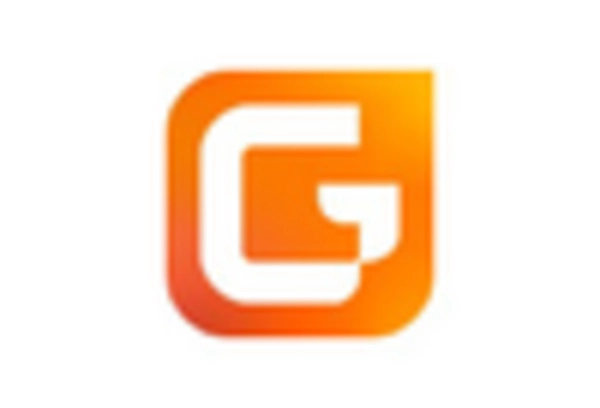Shift Towards Personalized Medicine
The Sustained Release Drug Market is witnessing a paradigm shift towards personalized medicine, which tailors treatment to individual patient profiles. This approach is gaining traction due to advancements in genomics and biotechnology, enabling healthcare providers to customize drug regimens based on genetic and metabolic factors. Sustained release formulations are particularly well-suited for personalized medicine, as they can be designed to meet specific patient needs, enhancing therapeutic efficacy. The market is expected to benefit from this trend, with estimates suggesting that personalized medicine could account for over 30% of the pharmaceutical market by 2030. This shift not only improves patient satisfaction but also optimizes healthcare resources.
Increasing Prevalence of Chronic Diseases
The Sustained Release Drug Market is significantly influenced by the rising prevalence of chronic diseases such as diabetes, hypertension, and cardiovascular disorders. As these conditions require long-term management, there is a growing demand for medications that offer sustained therapeutic effects. Reports indicate that chronic diseases account for nearly 70% of all deaths worldwide, underscoring the urgent need for effective treatment options. Sustained release formulations provide a viable solution by ensuring consistent drug levels in the bloodstream, thereby improving patient outcomes. This trend is likely to drive the market further, as healthcare systems increasingly prioritize long-term treatment strategies.
Technological Innovations in Drug Formulation
The Sustained Release Drug Market is experiencing a surge in technological innovations that enhance drug formulation processes. Advanced techniques such as nanotechnology and 3D printing are being integrated into drug development, allowing for more precise control over drug release profiles. These innovations not only improve the efficacy of medications but also reduce side effects, thereby increasing patient compliance. According to recent data, the market for sustained release formulations is projected to grow at a compound annual growth rate (CAGR) of approximately 7% over the next five years. This growth is indicative of the industry's shift towards more sophisticated drug delivery systems that cater to the evolving needs of patients and healthcare providers alike.
Rising Demand for Cost-Effective Treatment Options
The Sustained Release Drug Market is also driven by the increasing demand for cost-effective treatment options. Healthcare providers and patients alike are seeking solutions that not only improve health outcomes but also reduce overall treatment costs. Sustained release formulations can potentially lower the frequency of dosing, which may lead to decreased healthcare expenditures over time. Market analysis suggests that the adoption of these formulations could result in significant savings for healthcare systems, particularly in the management of chronic diseases. As the focus on cost efficiency intensifies, the sustained release drug market is poised for growth, aligning with the broader trend of value-based healthcare.
Regulatory Support for Innovative Drug Delivery Systems
The Sustained Release Drug Market is bolstered by increasing regulatory support for innovative drug delivery systems. Regulatory agencies are recognizing the potential of sustained release formulations to improve patient adherence and therapeutic outcomes. Initiatives aimed at expediting the approval process for novel drug delivery technologies are being implemented, which may encourage pharmaceutical companies to invest in research and development. As a result, the market is likely to see a rise in the introduction of new sustained release products. This regulatory environment fosters innovation and could lead to a more diverse range of treatment options for patients, ultimately enhancing the overall efficacy of healthcare.


















Leave a Comment